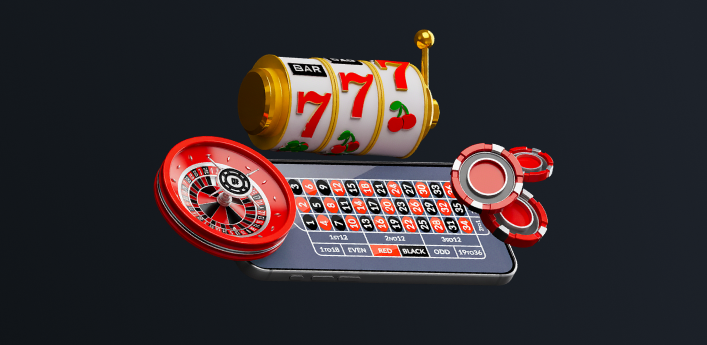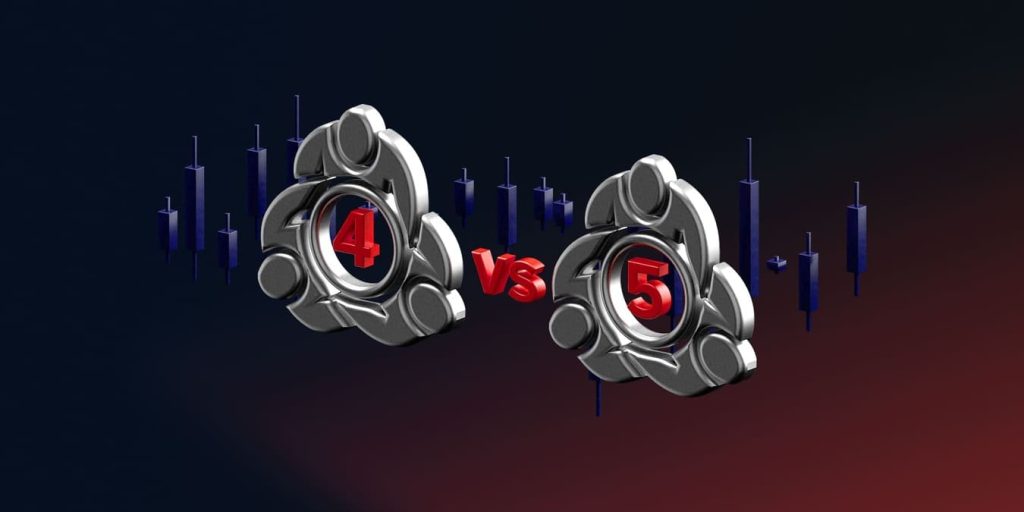
MT4 vs MT5: ¿Cuál es la diferencia?
Contenidos
Sin duda, las plataformas de trading más populares a nivel mundial son MT4 y MT5. MetaTrader 4 se diseñó inicialmente para operadores de divisas, pero evolucionó con el tiempo, y MetaTrader 5 se creó para abarcar acciones, futuros, criptomonedas y materias primas. Es importante comprender las diferencias entre estas dos opciones, ya que seleccionar la plataforma de trading adecuada a sus necesidades puede ayudar a los operadores a mejorar su rendimiento y aumentar sus ganancias generales.
Propósito y acceso al mercado
MT4 fue creado específicamente para operar con divisas fiduciarias. Ofrece una gama completa de instrumentos para la ejecución eficaz de transacciones de forex y la investigación de los mercados de divisas. MT4 proporciona cotizaciones de precios en tiempo real, gráficos detallados con varios marcos temporales y una variedad de tipos de órdenes que se adaptan a diversos estilos de trading. Es compatible con numerosos pares de divisas. Su interfaz intuitiva es ideal tanto para principiantes en el mercado de forex como para operadores experimentados que buscan funciones fiables y sencillas.
Esto se mejoró aún más en MetaTrader 5. Esta plataforma ofrece acceso a múltiples tipos de activos para operar. Sus usuarios pueden diversificar sus carteras entre diversas clases de activos, ya que tienen acceso a numerosos mercados financieros desde una única plataforma. MT5 proporciona información sobre la liquidez del mercado y el movimiento de órdenes al conectarse tanto con bolsas centralizadas como con mercados extrabursátiles (OTC). Herramientas como la herramienta de Profundidad de Mercado están disponibles. Esto resulta especialmente beneficioso para la negociación de acciones y futuros, donde comprender la profundidad del mercado es esencial.
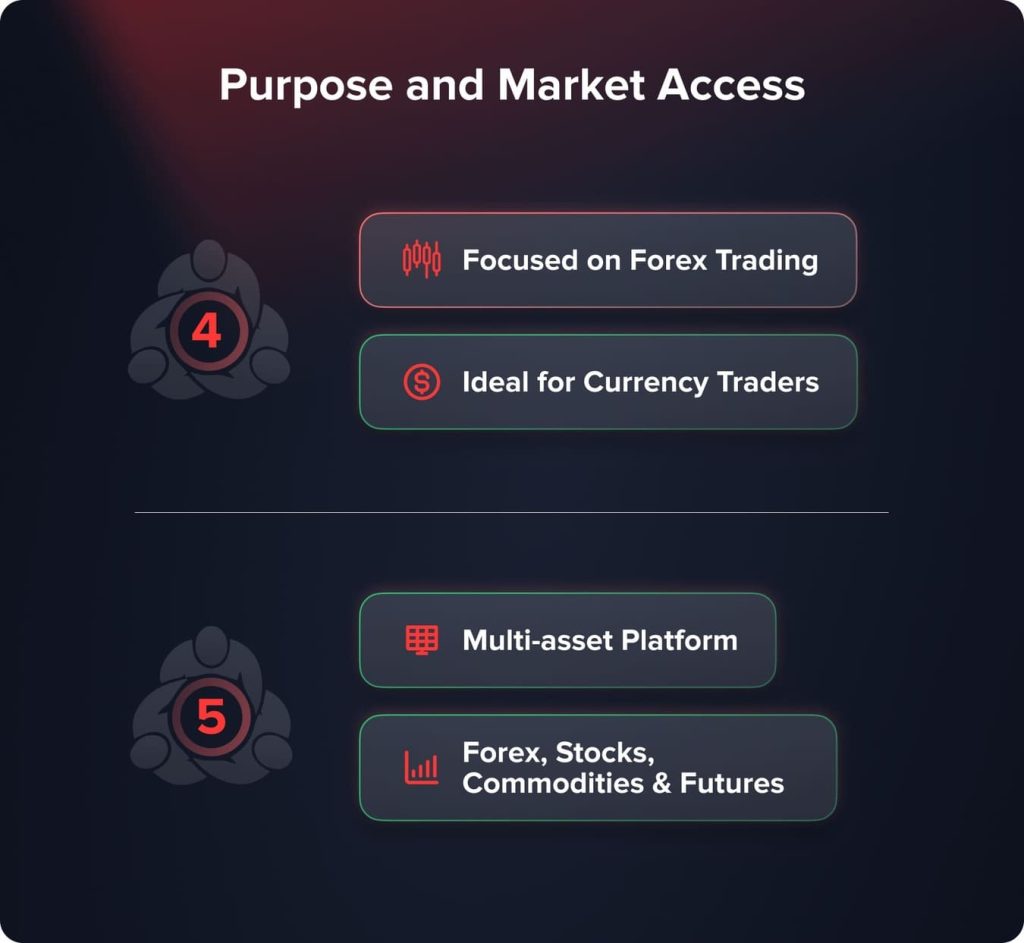
- MT4: Enfocado al trading de Forex, ideal para operadores de divisas.
- MT5: Plataforma multiactivo, adecuada para operar con divisas, acciones, materias primas y futuros.
Herramientas de análisis técnico y fundamental
Además de las herramientas de gráficos, MT4 ofrece a los operadores una amplia gama de indicadores técnicos diseñados específicamente para operar en forex. Sus 30 indicadores técnicos integrados y 31 funciones gráficas ofrecen un análisis técnico completo de los pares de divisas.
MT4 permite a los operadores analizar los patrones del mercado durante varios períodos gracias a su compatibilidad con nueve marcos temporales que van desde un minuto hasta un mes. Para quienes tengan conocimientos básicos de programación, la plataforma también permite la personalización de indicadores y la creación de estrategias de trading automatizadas mediante el lenguaje de programación MQL4, de fácil acceso.
Ofrenda 38 indicadores técnicos Con 44 elementos gráficos, MT5 amplía estas capacidades analíticas ofreciendo un espectro más amplio de instrumentos para una investigación de mercado exhaustiva. Abarca 21 marcos temporales, lo que permite a los operadores mayor libertad para examinar datos, desde gráficos de un minuto hasta intervalos mensuales.
MT5 permite visualizar hasta 100 gráficos simultáneamente, lo que permite un seguimiento exhaustivo del mercado y de los instrumentos. Al mantener a los operadores informados sobre eventos económicos y noticias que pueden afectar a los diferentes mercados financieros, MT5 también integra un calendario económico completo y servicios de noticias financieras directamente en la plataforma, lo que facilita el análisis fundamental.
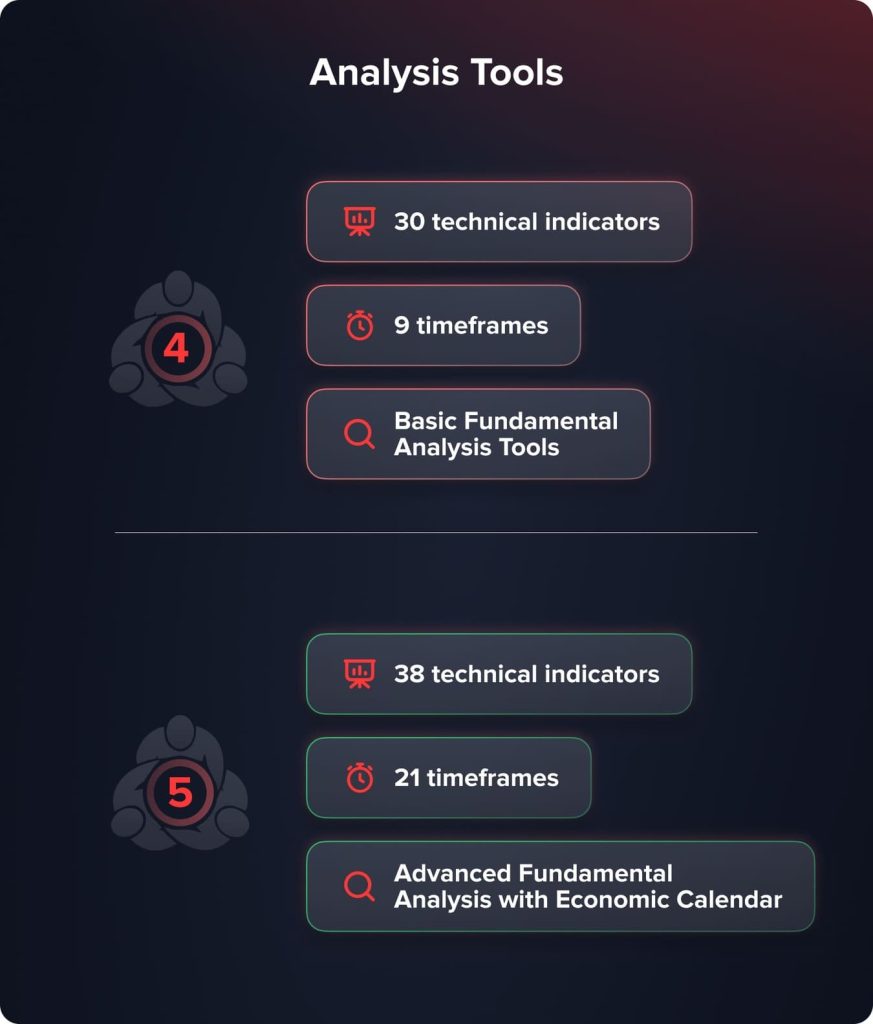
- MT4: 30 indicadores técnicos; 9 marcos temporales; herramientas básicas de análisis fundamental.
- MT5: 38 indicadores técnicos; 21 marcos temporales; análisis fundamental avanzado con calendario económico.
Lenguaje de programación y trading automatizado
Tanto MT4 como MT5 ofrecen trading automatizado mediante Asesores Expertos (EA), sistemas diseñados para ejecutar automáticamente actividades de trading mediante algoritmos predefinidos. Sin embargo, emplean lenguajes de programación diferentes, lo que afecta la complejidad y la capacidad de los algoritmos que se pueden desarrollar.
MT4 utiliza el lenguaje de programación MQL4. MQL4 es procedimental y relativamente simple, lo que lo hace accesible para operadores que aún se inician en la programación. Permite a los usuarios diseñar Asesores Expertos (EA) e indicadores personalizados para implementar automáticamente diversos planes y estrategias de trading. La simplicidad de MQL4 y el sólido apoyo de la comunidad facilitan el acceso a numerosos materiales, tutoriales y Asesores Expertos prediseñados.
You may also like
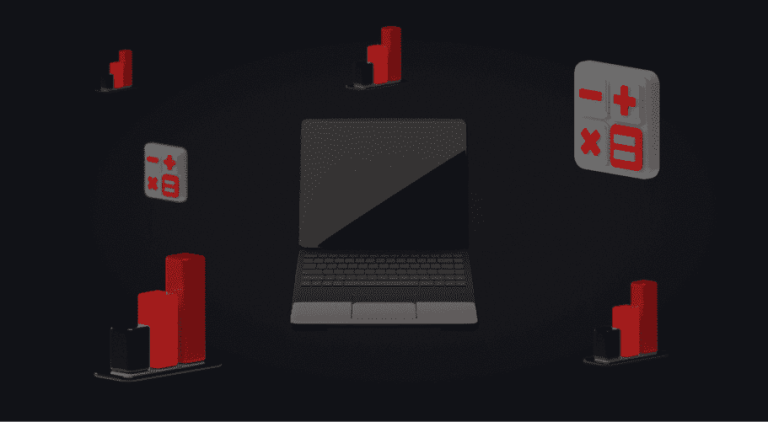
En cambio, MT5 utiliza el lenguaje de programación MQL5. MQL5, más avanzado y compatible con la programación orientada a objetos, permite crear robots e indicadores de trading más sofisticados. Las capacidades mejoradas de MQL5 permiten diseñar algoritmos complejos y tener mayor control sobre diversos métodos de trading.
Además, MT5 incluye un probador de estrategias multihilo que permite realizar backtestings más rápidos y efectivos, así como optimizar simultáneamente el EA en múltiples pares de divisas y períodos. Este sofisticado entorno de pruebas permite a los operadores verificar y perfeccionar con mayor precisión sus estrategias de trading automatizado.
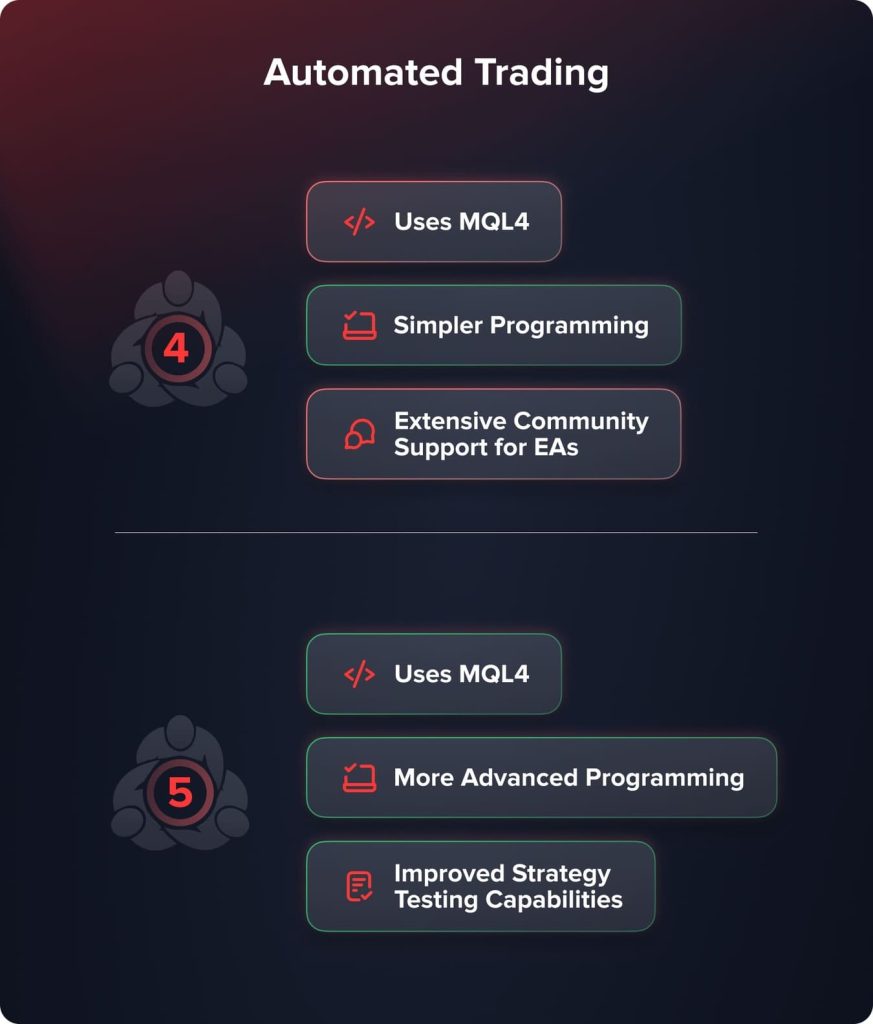
- MT4: utiliza MQL4; programación más sencilla; amplio soporte de la comunidad para EA.
- MT5: utiliza MQL5; programación más avanzada; capacidades mejoradas de prueba de estrategia.
Tipos de órdenes y modos de ejecución
Buy Limit, Sell Limit, Buy Stop y Sell Stop son cuatro tipos fundamentales de órdenes pendientes que MT4 ofrece a los operadores. Estas órdenes ofrecen flexibilidad a los operadores según las fluctuaciones esperadas del mercado, permitiéndoles realizar operaciones futuras a precios fijos. Una orden Buy Limit, por ejemplo, permite a un operador comprar un artículo a un precio inferior al precio actual del mercado, con la esperanza de que baje hasta cierto nivel antes de subir. Por otro lado, una orden Sell Limit permite vender por encima del precio actual del mercado, con la esperanza de que suba antes de bajar.
MT4 ofrece tres modos de ejecución: Ejecución instantánea, que ejecuta operaciones al precio mostrado; Ejecución por solicitud, que permite a los operadores solicitar una cotización antes de realizar un pedido; y Ejecución de mercado, que ejecuta órdenes al precio de mercado actual sin recotizaciones, priorizando la velocidad de ejecución sobre el precio exacto.
Al añadir dos tipos de órdenes pendientes adicionales (Buy Stop Limit y Sell Stop Limit), MT5 amplía estas características. Al combinar partes de las órdenes stop y las órdenes límite, estas órdenes híbridas permiten a los operadores establecer puntos de entrada más precisos y utilizar técnicas de trading avanzadas. Una vez alcanzado el precio stop designado, una orden Buy Stop Limit, por ejemplo, se convierte en una orden Buy Limit, lo que permite a los operadores beneficiarse de las fluctuaciones proyectadas del mercado con mayor control.
You may also like
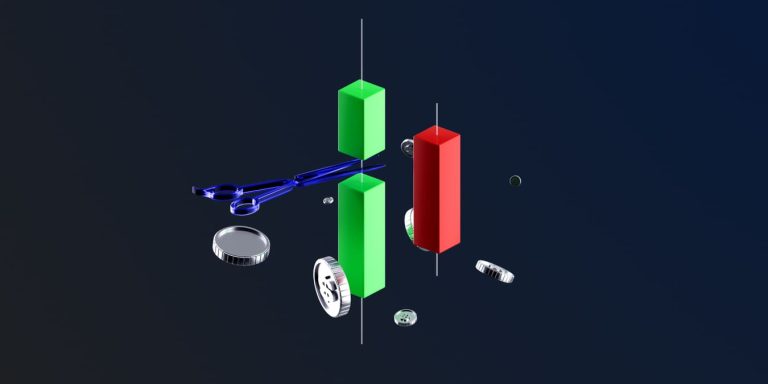
Fundamental para operar en bolsas centralizadas como acciones, materias primas y futuros, MT5 ahora introduce una opción de ejecución adicional conocida como Ejecución de Bolsa. Este método garantiza que las órdenes se ejecuten según las reglas de la bolsa, brindando así a los operadores acceso directo a la información sobre la profundidad del mercado y la liquidez.
MT5 mejora la flexibilidad y precisión de las operaciones al ofrecer una gama más amplia de tipos de órdenes pendientes y técnicas de ejecución. Las técnicas más sofisticadas, adaptadas a diferentes circunstancias del mercado y clases de activos, permiten a los operadores utilizarlas. Especialmente en mercados dinámicos o turbulentos, las opciones adicionales de MT5 ayudan a mejorar la gestión de riesgos y permiten una ejecución de operaciones más eficaz, lo que facilita sus beneficios.
MT5 mejora la flexibilidad y la precisión de las operaciones al ofrecer una gama más diversa de tipos de órdenes pendientes y mecanismos de ejecución. Los operadores pueden utilizar métodos más avanzados que se adaptan a determinadas circunstancias del mercado. tipos de activos Las opciones adicionales de MT5 facilitan una mejor gestión del riesgo y permiten una ejecución más eficiente de las operaciones, lo que resulta especialmente beneficioso en mercados volátiles o de rápida evolución.
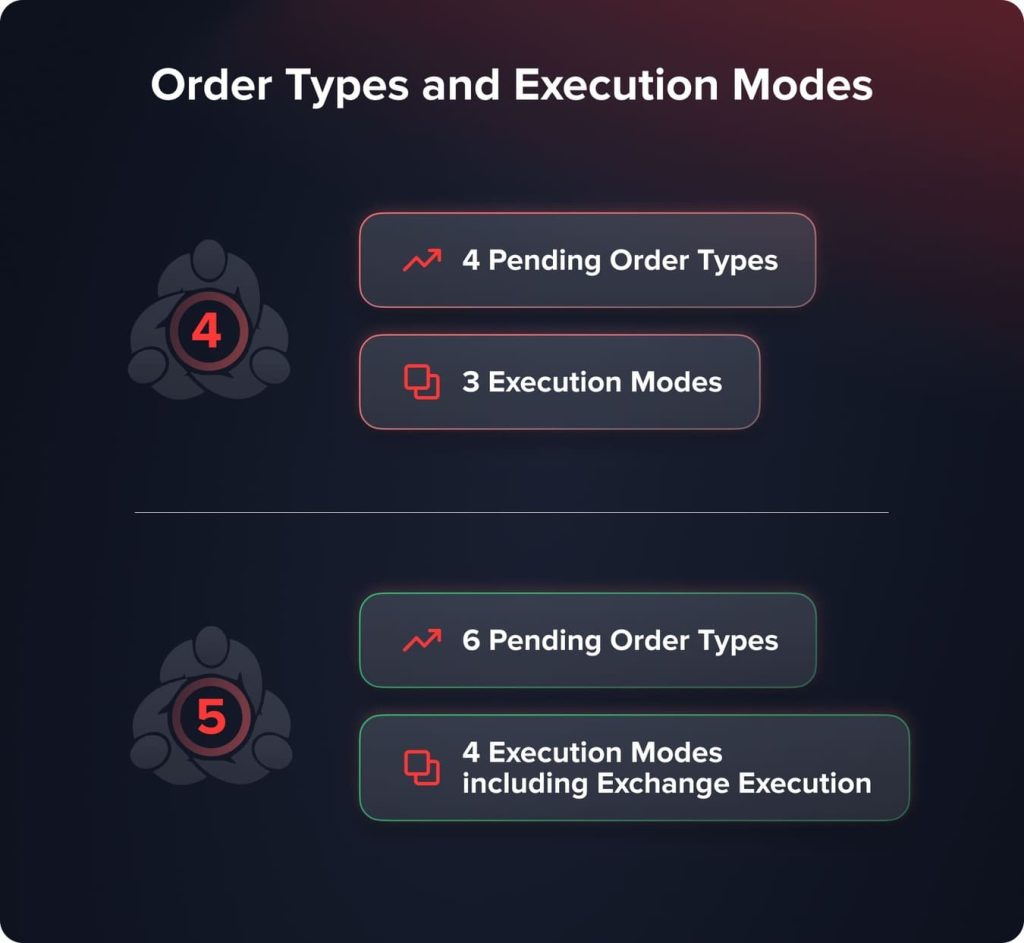
- MT4: 4 tipos de órdenes pendientes; 3 modos de ejecución.
- MT5: 6 tipos de órdenes pendientes; 4 modos de ejecución, incluida ejecución de intercambio.
Sistemas de cobertura y compensación
La cobertura, una técnica en la que los operadores abren simultáneamente varias posiciones sobre el mismo activo financiero en diferentes direcciones, es posible gracias a MT4. Por lo tanto, en el mismo par de divisas, un operador puede mantener simultáneamente una posición de compra (larga) y una de venta (corta). Los operadores de Forex suelen utilizar la cobertura como una técnica estándar para reducir el riesgo, ya que les permite minimizar las posibles pérdidas derivadas de las fluctuaciones negativas del mercado sin cerrar sus posiciones iniciales. La cobertura ayuda a los operadores a mantener la flexibilidad en sus estrategias de trading, beneficiarse de las fluctuaciones del mercado a corto plazo y proteger sus activos de la volatilidad.
Originalmente concebido con un sistema de compensación, MT5 es más adecuado para mercados cotizados en bolsa, como acciones, materias primas y futuros. Los operadores con este sistema solo tienen una posición abierta por instrumento financiero. Si se realiza una nueva transacción con el mismo instrumento, se cerrará o modificará la posición actual en lugar de generar una independiente. Este método es una práctica común en mercados donde la cobertura no se utiliza o permite ampliamente, y se ajusta a las normas de muchas bolsas centralizadas.
You may also like

Dada la gran demanda de la comunidad de operadores, MT5 ahora también permite la cobertura. Este avance permite a los operadores decidir qué método de cobertura y compensación se adapta mejor a sus necesidades y a los mercados en los que operan. Al habilitar la cobertura, MT5 ofrece a los operadores de forex y a quienes utilizan este enfoque la oportunidad de controlar mejor el riesgo. Los operadores pueden abrir un número ilimitado de posiciones en el mismo instrumento, en la misma dirección o en direcciones opuestas, sin restricciones.
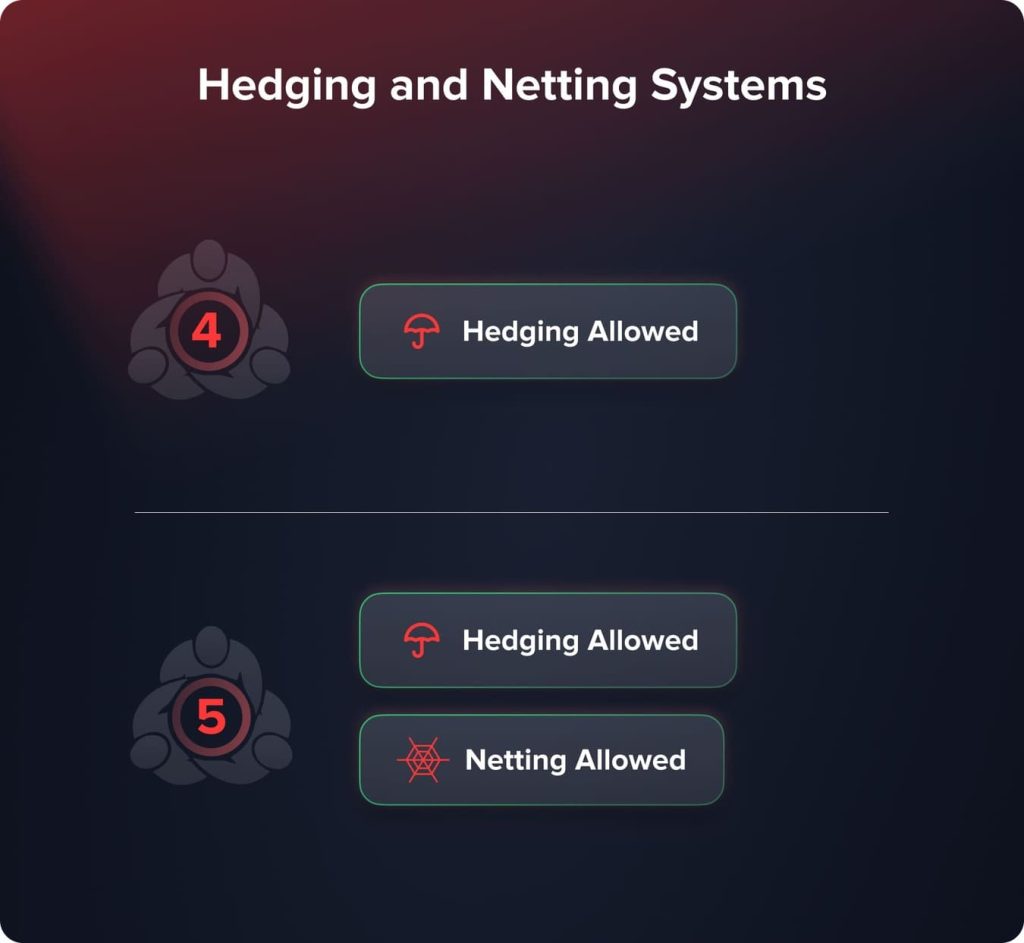
- MT4: Cobertura permitida.
- MT5: Admite sistemas de cobertura y compensación.
Interfaz y experiencia de usuario
Reconocida por su simplicidad y facilidad de uso, MT4 cuenta con una interfaz clara que atrae a operadores con diferentes niveles de conocimiento. El diseño de la plataforma prioriza la accesibilidad y la utilidad, ofreciendo a los usuarios un diseño ordenado donde las herramientas y los elementos importantes son fáciles de encontrar. Las barras de herramientas y gráficos personalizables de la interfaz de usuario de MT4 permiten a los operadores adaptar su espacio de trabajo a sus preferencias sin añadir elementos innecesariamente complejos. Esta simplicidad hace que MT4 sea especialmente atractiva para los nuevos operadores, ya que acorta la curva de aprendizaje y les permite realizar operaciones con confianza.
Además, MT4 utiliza menos recursos del sistema, lo que garantiza un funcionamiento fluido incluso en sistemas menos potentes o desactualizados. Muchos operadores utilizan MT4 porque su eficiencia reduce los problemas tecnológicos que podrían afectar las operaciones.
MT5 ofrece funciones adicionales y opciones de personalización mejoradas, ofreciendo una experiencia de usuario más moderna y sofisticada. La plataforma está diseñada para brindar una experiencia de usuario mejorada, dirigida a operadores que necesitan funciones más complejas y mayor control sobre su entorno de trading. Las funciones de gráficos ampliadas de la interfaz de MT5 permiten acceder a una mayor variedad de períodos y herramientas analíticas, además de mostrar varios gráficos simultáneamente.
El programa también ofrece una gestión sofisticada de órdenes e información sobre la profundidad del mercado, lo que permite a los operadores tener acceso a datos completos. Si bien la interfaz mejorada de MT5 ofrece mayor profundidad analítica y flexibilidad, podría requerir más recursos computacionales, lo que afectaría el rendimiento en sistemas menos competentes o antiguos. Si su hardware no cumple con los requisitos de la plataforma, los operadores podrían experimentar tiempos de carga más largos o menor capacidad de respuesta.
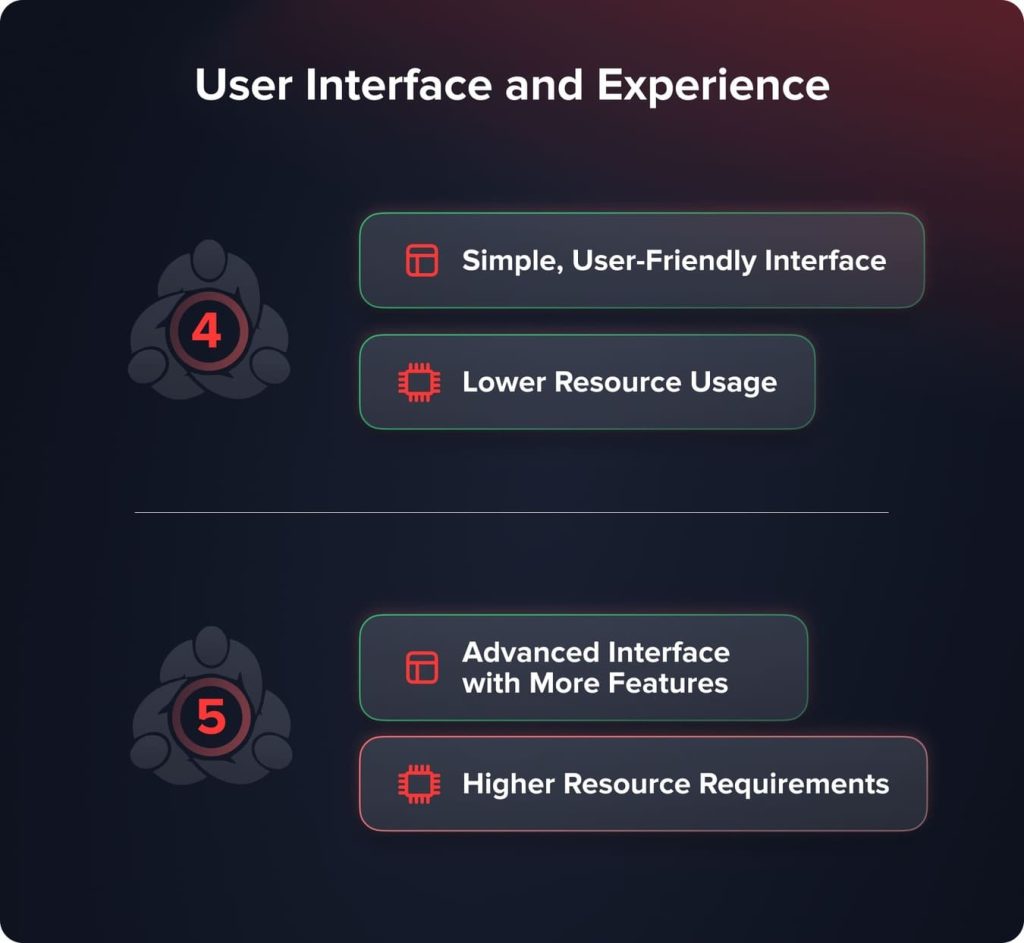
- MT4: Interfaz sencilla y fácil de usar; menor uso de recursos.
- MT5: Interfaz avanzada con más funciones; mayores requisitos de recursos.
Compatibilidad y soporte
Durante muchos años, MT4 ha sido el estándar de la industria para sistemas de trading; corredores de todo el mundo lo respaldan firmemente. Su fiabilidad y longevidad han generado una considerable comunidad de usuarios que, a su vez, ha contribuido a la creación de un ecosistema masivo de plugins independientes, indicadores personalizados y Asesores Expertos (EA).
Esta extensa base de recursos permite a los operadores mejorar y personalizar considerablemente su entorno de trading. MT4 es familiar, por lo que los recursos instructivos, tutoriales y la asistencia de la comunidad son fácilmente accesibles para operadores de todos los niveles. Los brókers valoran su sólida trayectoria y su fluida integración, lo que contribuye a garantizar su continua supremacía en el sector del trading de forex.
Si bien MT5 está ganando popularidad, aún no ha alcanzado el mismo nivel de soporte global que MT4. Debido a los importantes cambios de infraestructura requeridos y a la sólida base de usuarios de MT4, varios brókeres se han mostrado reacios a aceptar MT5. Sin embargo, la demanda de funciones mejoradas y la capacidad de negociación multiactivo que ofrece MT5 está impulsando una creciente aceptación. Los brókeres están ampliando sus productos para incorporar MT5, ya que los operadores buscan acceder a una gama más amplia de instrumentos financieros y las herramientas analíticas mejoradas los obligan a hacerlo.
La disponibilidad de herramientas de terceros, plugins y Asesores Expertos (EA) se expande a medida que más usuarios migran a MT5. Si bien no es tan extenso como el ecosistema de MT4, el sistema de soporte de MT5 está creciendo rápidamente y ofrece a los operadores más herramientas para mejorar sus estrategias de trading.
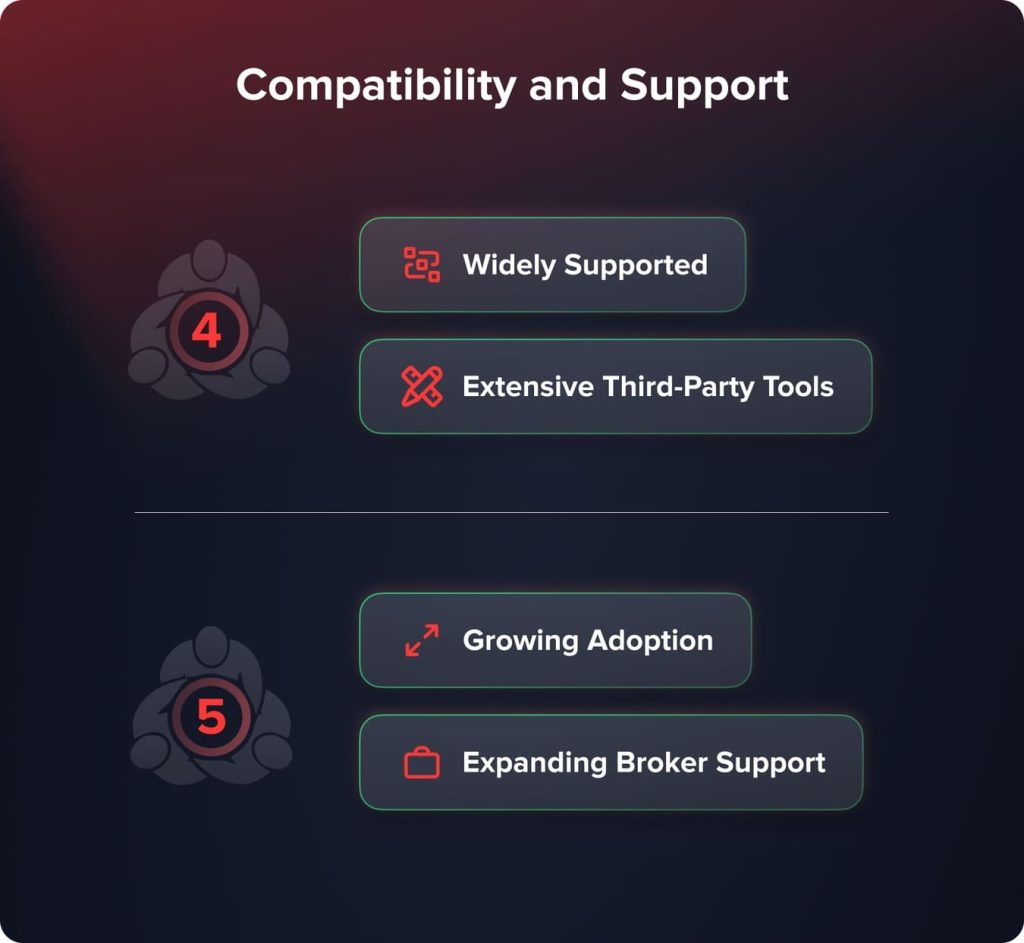
- MT4: amplio soporte; amplias herramientas de terceros.
- MT5: Adopción creciente y expansión del soporte de corredores.
Conclusión
Elegir la plataforma que mejor se adapte a sus objetivos de trading depende de conocer las diferencias entre MT4 y MT5. Los operadores de Forex siguen considerando que MT4 es una opción sólida y fiable; para quienes desean operar con múltiples activos, MT5 ofrece más opciones. Examinar las herramientas y características específicas de cada plataforma puede ayudarle a tomar una decisión acertada y a mejorar su éxito en el trading.
FAQ
Los operadores de Forex que buscan una plataforma sencilla e intuitiva con amplia asistencia de la comunidad y menos recursos pueden encontrar MT4 más adecuada. Para quienes operan en diversos mercados, MT5 ofrece herramientas sofisticadas, operaciones con múltiples activos y funcionalidades avanzadas. En definitiva, MT5 es mejor para quienes necesitan funciones más avanzadas y acceso a más mercados.
Los operadores que utilizan ambos sistemas afirman que MT4 y MT5 tienen lenguajes de programación únicos. La diferencia radica en que el lenguaje de programación de MT4 es más sencillo de usar, desarrollar e instalar, lo que lo hace ideal para operadores sin experiencia, ya que solo requiere unos pocos pasos para configurar sus funciones.
Es posible operar simultáneamente en las plataformas MT4 y MT5. Sin embargo, deberá crear cuentas de trading individuales para cada plataforma, ya que las cuentas MT4 y MT5 no son intercambiables debido a las diferencias en la arquitectura y el formato de datos.
Actualizado:
19 de diciembre de 2024


